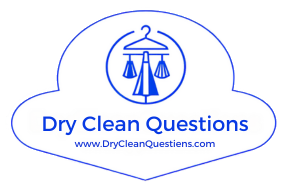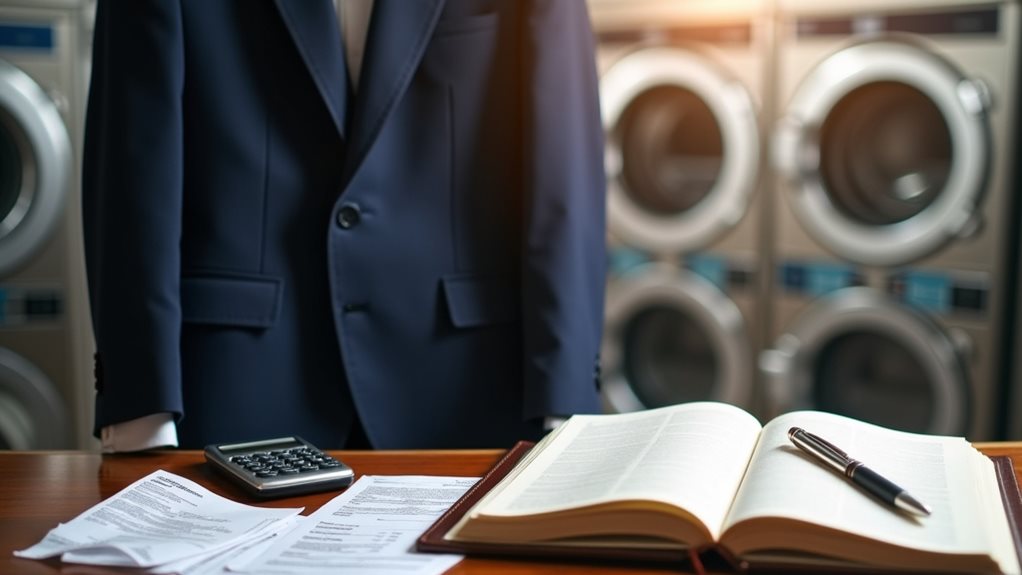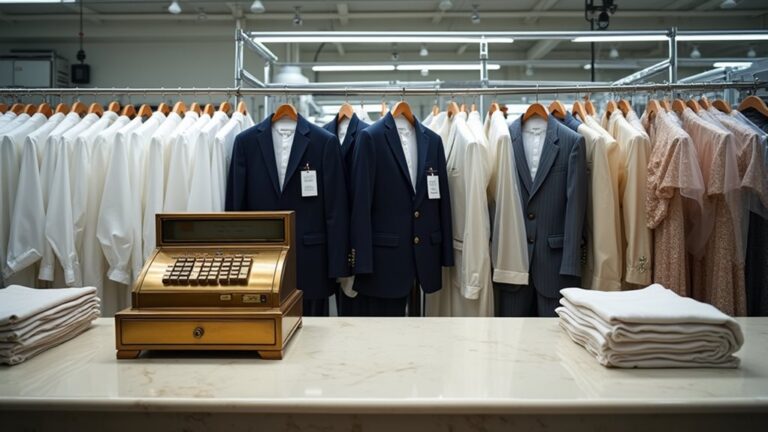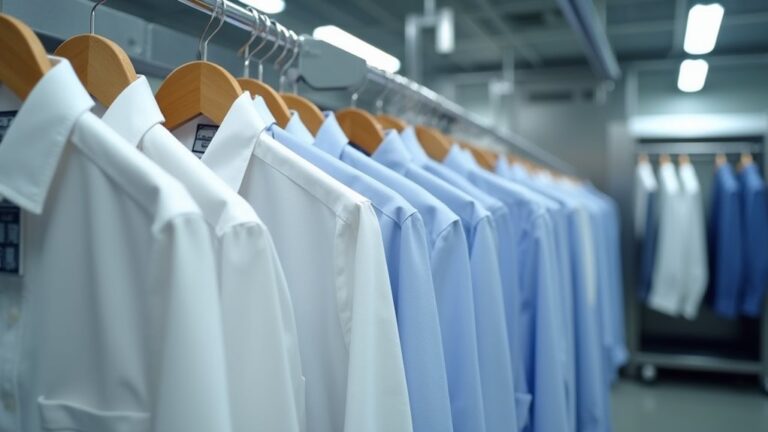You can absolutely deduct dry cleaning as a business expense, but here’s the catch—your clothing must be required by your employer and unsuitable for everyday wear. Think uniforms, protective gear, or industry-specific attire that screams “work only.” Regular business suits? Sorry, those don’t qualify since you could wear them to dinner dates. Self-employed folks have more flexibility than employees, and proper documentation is essential for surviving any IRS scrutiny that might come your way.
Understanding Business Expense Classifications for Dry Cleaning
When I first started my consulting business, I’ll admit I was pretty clueless about what counted as a legitimate business expense – I once tried to write off my entire wardrobe because, hey, I wore those clothes to client meetings, right? 😅
Well, the IRS doesn’t quite see it that way, and understanding how dry cleaning fits into business expense classifications can save you from making the same rookie mistakes I did.
Here’s the thing about dry cleaning costs: they’re only considered valid business expenses when you’re cleaning uniforms or specialized clothing that’s absolutely necessary for work.
The key distinction is whether those clothes are suitable for everyday wear outside your workplace – if they’re not, then you’ve got yourself some legitimate tax deductions to claim on your business expenses.
While the IRS generally requires documentation for dry cleaning expenses over $75, you can claim smaller amounts with detailed logs or other supporting records that show the business purpose, date, and amount of each expense.
IRS Requirements for Deductible Work Clothing

Although the IRS might seem like they’re just trying to make your life difficult, their requirements for deductible work clothes actually follow a pretty logical framework that, once you understand it, becomes surprisingly straightforward to manage.
Once you grasp the IRS logic behind work clothing deductions, navigating their requirements becomes much more manageable than expected.
Here’s what the IRS demands before you can deduct the cost of dry cleaning your work wardrobe:
- Employer requirement – Your boss must specifically mandate the clothing.
- Work-only use – You can’t wear these items anywhere else (sorry, no grocery shopping in scrubs!).
- Unsuitable for everyday wear – Think uniforms, not business casual.
- Proper documentation – Keep every receipt like your refund depends on it.
Additionally, self-employed individuals may face different rules and requirements compared to traditional employees when claiming these dry cleaning deductions on their tax returns.
When you’re unsure about these rules, consulting a tax professional can save you from awkward audit conversations later
Examples of Qualifying Dry Cleaning Expenses

You’ll find that uniform cleaning costs represent the most straightforward qualifying expense, especially when you’re managing hospitality staff whose crisp appearances directly impact your business reputation and customer experience.
When your construction workers need their protective gear professionally cleaned to maintain safety standards, those dry cleaning bills become legitimate business deductions that I’ve seen many contractors overlook during tax season.
Your industry-required work attire, like those expensive suits your sales team wears to client meetings, creates ongoing cleaning expenses that absolutely count as operational costs – and trust me, keeping detailed receipts for these monthly charges will make your accountant smile come April! 😊
Remember that self-employed individuals often have different deduction opportunities compared to employees with unreimbursed business expenses, so understanding your employment status can help maximize your legitimate dry cleaning deductions.
Uniform Cleaning Costs
Several types of uniform cleaning costs qualify as legitimate business deductions, and understanding these categories can save you notable money come tax season.
Your small business can benefit greatly when you properly categorize these specialized clothing expenses, though I’ve learned the hard way that documentation is everything.
Here are four qualifying uniform cleaning costs:
- Restaurant staff uniforms – Chef coats, server aprons, and branded polo shirts that aren’t suitable for street wear
- Medical scrubs and lab coats – Healthcare professionals’ required attire that meets industry standards
- Safety gear cleaning – Hard hats, reflective vests, and protective clothing mandated by workplace regulations
- Corporate event attire – Specialized clothing worn during company presentations or trade shows
Remember that maintaining detailed records and receipts for all uniform cleaning expenses is essential to support your deductions and ensure compliance with IRS requirements.
Protective Gear Maintenance
Maintaining protective gear through professional dry cleaning transforms from a simple expense into a critical safety investment, especially when you’re dealing with specialized equipment that literally protects lives on the job.
When you’re running a construction company, fire department, or chemical plant, those hard hats, flame-resistant suits, and hazmat gear aren’t just clothing—they’re lifelines that need meticulous care.
I’ve watched too many businesses skimp on proper maintenance, only to face safety violations later. Your dry cleaning expenses for protective gear qualify as legitimate business expenses because this equipment must remain compliant with safety regulations.
Unlike regular uniforms, protective gear requires specialized cleaning processes that preserve its safety features, making professional maintenance absolutely vital for both compliance and worker protection.
The chemical solvents used in dry cleaning are particularly effective for protective gear because they remove hazardous contaminants without compromising the fabric’s integrity or safety certifications.
Industry-Required Work Attire
Beyond the high-stakes world of protective equipment, countless professionals face daily decisions about maintaining their industry-required uniforms.
I’ve learned that understanding which clothing qualifies for dry cleaning deductions can save you hundreds, sometimes thousands, of dollars each year.
Your professional appearance matters, but so does knowing when you can Deduct Dry cleaning costs for tax purposes.
Here’s what typically qualifies:
- Nurses’ scrubs and medical uniforms that can’t be worn casually
- Police officer uniforms with insignia and specialized features
- Mechanic coveralls designed solely for automotive work
- Chef coats and restaurant uniforms unsuitable for street wear
To ensure compliance and maximize your legitimate deductions, maintaining proper record-keeping practices is essential for all qualifying dry cleaning expenses.
Non-Deductible Dry Cleaning Scenarios
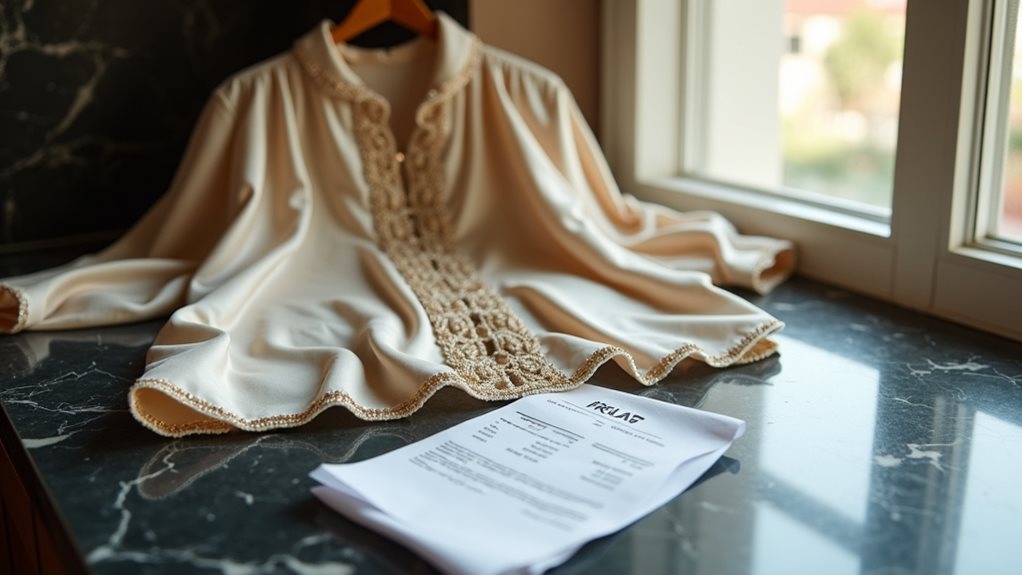
While you might think your sharp business suit deserves a tax break since you wear it to close deals and impress clients, the IRS draws a firm line in the sand when it comes to everyday work attire.
Your dry cleaning expenses for that gorgeous blazer or those crisp dress shirts are non-deductible, even though they’re vital for maintaining your professional image.
Here’s the reality check: if your clothing can shift from boardroom to dinner date, it’s considered personal attire.
Take Judy from accounting or Rick in sales – their business clothing looks fantastic, but since they could wear those outfits to social events, their dry cleaning costs don’t qualify for deductions.
The same rule applies to freelance personal trainers whose gym clothes serve dual purposes. 😔
This distinction between personal and business clothing expenses can be complex and subject to scrutiny during IRS audits.
Tax Implications for Employees vs. Self-Employed Individuals

When tax season rolls around, the rules for deducting dry cleaning expenses split dramatically depending on whether you’re punching a time clock or running your own show.
The tax implications couldn’t be more different, and honestly, it’s one of those quirky IRS distinctions that’ll make you scratch your head.
If you’re self-employed, you’ve got more flexibility to deduct those cleaning bills, but there’s a catch – your clothes must pass the IRS’s strict “unsuitable for street wear” test.
Meanwhile, employees face tougher restrictions until at least 2026.
Given the complexity of these regulations and their potential for change, consulting with a tax professional ensures you’re maximizing deductions while staying compliant with current IRS requirements.
Here’s what you need to remember:
- Keep detailed receipts regardless of your employment status
- Document the business necessity of each cleaned item
- Understand your state’s specific regulations
- Never misclassify expenses to avoid authority issues
Proper Documentation and Record-Keeping Requirements
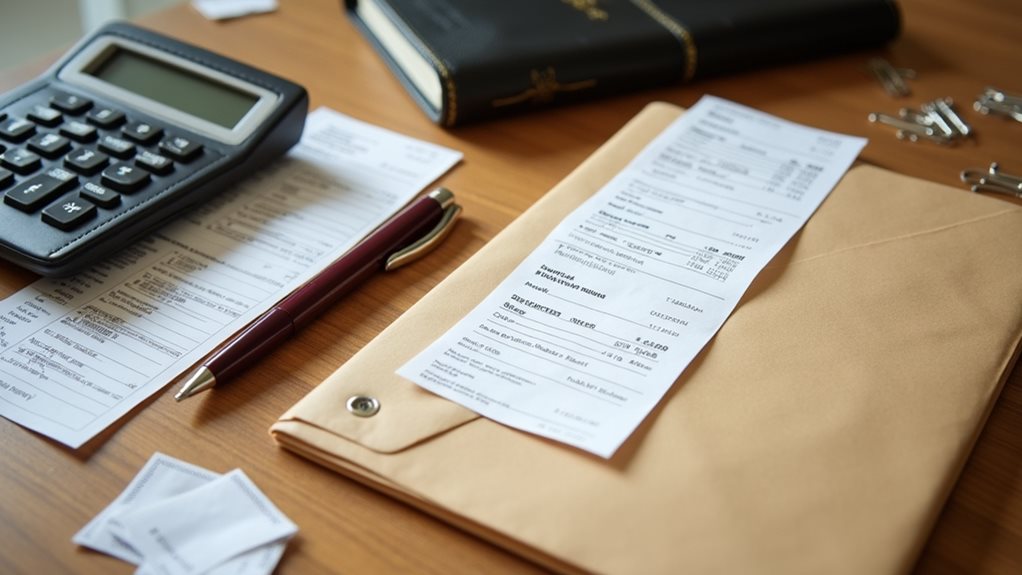
The paperwork trail you create today becomes your lifeline tomorrow, and I learned this lesson the hard way when an IRS auditor asked me to prove why my business needed $800 worth of dry cleaning in 2019.
Without proper documentation, my confident smile turned into nervous stuttering as I scrambled through shoebox receipts.
You’ll want to maintain every receipt, invoice, and bank statement that shows your dry cleaning expenses, especially if you’re running one of those small businesses where presentation matters.
When preparing your tax return, categorize these costs accurately—whether they’re operational expenses or uniform maintenance—and document the specific business purpose for each expense.
Keep everything for three years minimum, because trust me, auditors love testing entrepreneurs who can’t back up their deductions with solid paperwork. Understanding how fabric complexity and special treatments affect your total costs will help you better document and justify higher-than-average dry cleaning expenses during an audit.
State Tax Considerations and Alternative Deduction Opportunities

While federal rules might leave you feeling stuck with those dry cleaning bills, you’ll discover that state tax laws often march to their own drummer, creating opportunities where Uncle Sam says no.
If you’re self-employed, you’ve got a fighting chance to claim those pressed shirts and crisp blazers as legitimate business expenses, especially when your work demands professional appearance standards that go beyond everyday casual wear.
Your business can also classify dry cleaning costs differently depending on whether you’re maintaining employee uniforms or specialized work clothing, so understanding these distinctions becomes vital for maximizing your deductions while staying compliant.
Keep in mind that employees face the 2% AGI threshold for miscellaneous itemized deductions, though recent tax law changes have eliminated many of these employee expense deductions for tax years 2018-2025.
State-Specific Deduction Rules
Fifty states means fifty different sets of tax rules, and honestly, steering through this maze reminds me of trying to find matching socks after laundry day – frustrating but surprisingly rewarding when you discover hidden treasures.
Your state tax rules mightn’t follow federal guidelines, which means you could still deduct dry cleaning costs as a business expense even when Uncle Sam says no.
Here’s what you need to investigate:
- Check if your state decoupled from federal tax changes regarding itemized deductions
- Research specific professional clothing allowances in your state’s tax code
- Verify if self-employed individuals receive different treatment than employees
- Examine industry-specific exceptions for required work attire
Self-Employment Tax Benefits
Since you’re running your own show as a self-employed professional, you’ve got more wiggle room when it comes to deducting dry cleaning expenses.
Trust me, after years of watching business owners miss these opportunities, I can tell you that understanding your options feels like discovering money hiding in your winter coat pocket.
You can categorize these costs as operational expenses when the clothing is strictly for work purposes, like safety gear or uniforms that scream “professional” rather than “weekend brunch.”
I’ve seen freelancers successfully deduct dry cleaning by maintaining meticulous records and proving their attire wasn’t suitable for everyday wear.
The key? Document everything with receipts and photos showing the work-specific nature of your clothing 📸.
Business Uniform Classifications
Business uniform classifications become incredibly important when you’re maneuvering through the maze of state tax regulations, and I’ve watched countless business owners stumble through this area simply because they didn’t realize that state rules often differ dramatically from federal guidelines.
Here’s what you need to track for professional clothing deductions:
- Document that uniforms are used exclusively for work purposes
- Maintain detailed records of all costs related to cleaning specialized attire
- Verify your state’s specific regulations regarding uniform expense deductions
- Guarantee proper classification between operational and miscellaneous business expenses
I’ve seen entrepreneurs miss thousands in legitimate deductions because they didn’t understand their state’s stance on uniform cleaning costs.
While federal rules might seem restrictive, your state could offer surprising opportunities for these crucial business expenses! 😊
